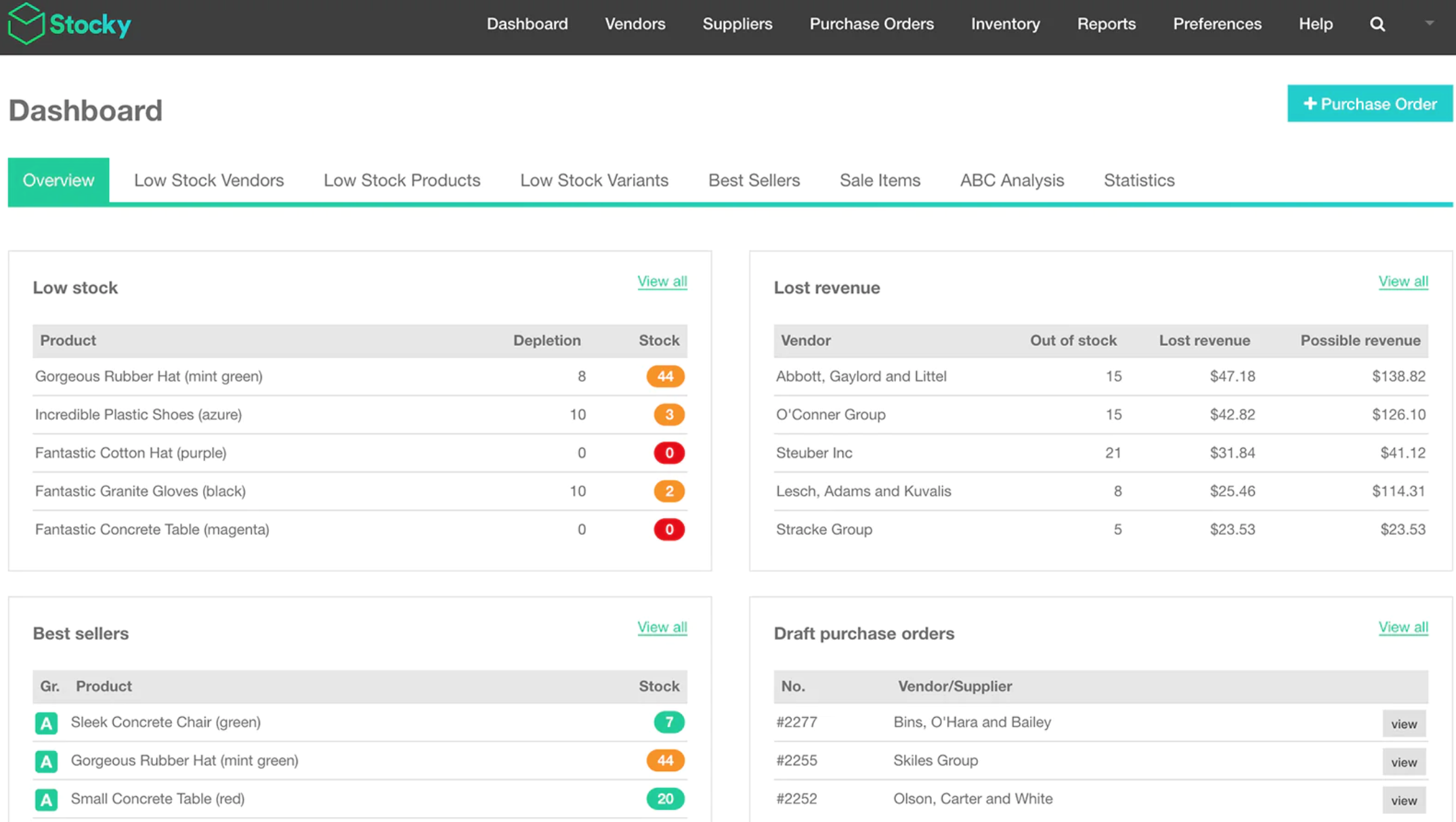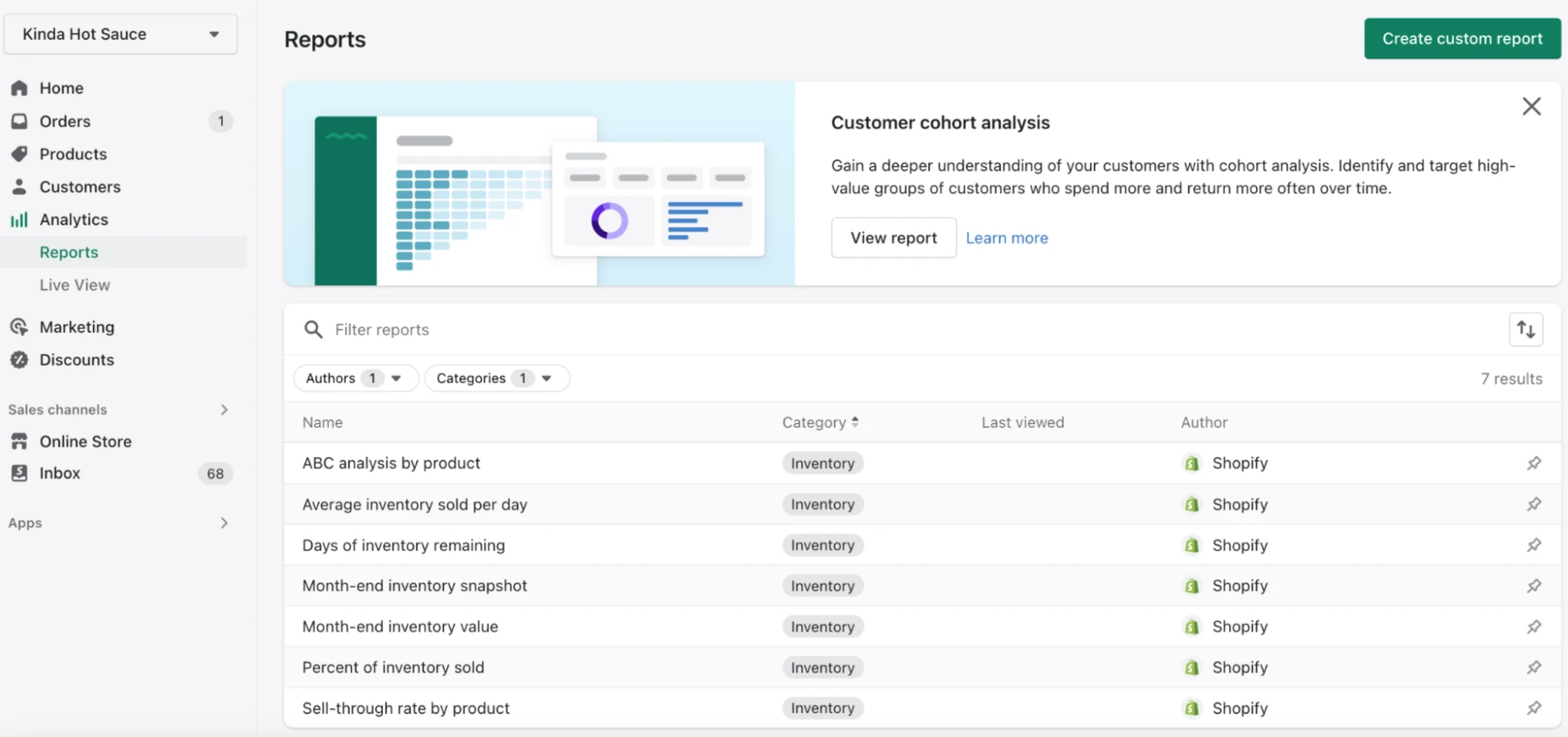When you are considering getting into the business of ecommerce, the question of how much inventory one should buy for an online store is critical. The question stems from the need to balance inventory given that:
- As your store is new, you have no clear picture of how much demand you will be dealing with.
- You also do not want to over invest in inventory before you have a clear picture of which products will perform well and which ones will not perform well.
That said, you still need to avoid stock outs, deadstocks and the problem of over stocking and this is exactly what this article will help you with.
The guide will also show you the value of leveraging robust ecommerce platforms such as Shopify that have powerful and intuitive inventory management and control features.
Streamlining your Inventory Management

Running a successful ecommerce business requires careful planning and an all hands-on-the-deck approach. Critical to the success of your online store is strategic decision making particularly in the aspect of inventory management.
Understanding Your Business Needs
I will share some inventory management practices that you need to consider to streamline the inventory management for your store.
Before we delve into the different models of inventory management, it is crucial that as an ecommerce retailer you understand your business needs.
- Product Types: What types of products are you selling, are your products perishable, seasonal or evergreen?
- Demand Patterns: What insights can you glean from your market research and surveys, also what are the typical trends and demand dynamics related to the products that you are selling?
- Growth Projections: Based on your market research and growth projections in your business plan, what trajectory do you expect from your sales?
- Seasonal Factors: Are there any seasonal factors you need to account for in planning your inventory? What are these and how much do they impact demand? What are the implications for inventory management?
The profitability of your business and the satisfaction of your customers is hinged on the purchase of appropriate amounts of inventory.
Inventory Control Versus Inventory Management
These terms and phrases can be confusing as they seem to refer to the same thing. There are however important differences between inventory control and inventory management.
Inventory Control: This refers to the means of handling and regulating inventory that one already has.
It pertains to arrangement of stock across the floor, the movement of stock from the warehouse to the shelves, also refers to what you do with the leftover stock and how products are tracked using barcodes or RFID tags.
Inventory control, also known as stock control, has got a lot to do with ensuring that you have sufficient products or merchandise to meet sales demands, make a profit and minimize inventory related costs.
In a typical brick and mortar store, there would be stockpiles of inventory kept in the store.
Inventory Management: Inventory Management refers to inventory demand forecasting and replenishment. It pertains to strategic aspects of planning the inventory volumes for your online store.
This also covers: what inventory system and backordering processes, bulk ordering systems the store will use.
Inventory Management Strategies
There are a few inventory management strategies to consider. Each strategy has its pros and cons.
Just-In-Time (JIT): With this strategy you minimise the having excess inventory by only ordering products when they are needed.
Safety Stock: With this approach you keep a “safety stock” as buffer inventory to mitigate the risk of stockouts.
ABC Analysis: With this strategy you prioritise products based on their demand.
Understanding these strategies helps you choose the one that aligns best with your business model, demand and financial control.
Setting Inventory Levels
To determine how much inventory you should buy for your online store you need to consider the following:
Shopify Inventory Management System
Shopify is a leading e-commerce platform with a 25% market share in ecommerce globally. The platform has a user-friendly interface that enables retailers to build professional, high end, and visually appealing online stores.
Shopify also provides robust inventory control as well as inventory management tools, features and functions.
With Shopify’s inventory management tools, you can forecast demand and set low stock alerts, as well as create purchase orders.
The set of inventory management and control features enable you to know which of your products are selling or sitting on shelves.
The Shopify Edge

Shopify’s Point of Sale (POS) plan empowers you to manage the warehouse and retail store inventory from the same back office. The system enables you to compare costs to revenue, and map out which items are selling out or sitting on shelves.
With these tools and data you can forecast demand, streamline and optimize your inventory management and control.
Modern retail leverages technology and software solutions for inventory management and inventory control.
Technology enables you to keep the finger on the pulse of your online store stock levels from anywhere where there is an internet connection.

Shopify‘s inventory management apps like Stocky include features such as the following:
- Real-time stock tracking
- Automatic inventory adjustments
- Streamlining your inventory management processes
Such digital inventory systems and processes take away the hassles of doing this manually and therefore afford you quality time to focus on growing your business.
Benefits of Inventory Control and Inventory Management

There are many benefits to establishing inventory management systems and processes.
Customer Service
Inventory controls and management increase the efficiency of your online store. Having correct records of stocks is important for avoiding stock outs and unfulfilled orders: which leads to bad customer service.
Efficient Ordering Experience
The other benefit of streamlining your inventory controls and management is having an efficient ordering experience – that is fast and easy. A study shows that a third of customers in the US consider switching companies after just one poor customer experience.
Inventory control help you to:
- Keep accurate records of stock
- Make accurately informed inventory management decisions
- Eliminate write-offs
- Maintain capacity to fulfil orders
Quality Assurance
With streamlined inventory controls and management you will be in position to quality assure your stock. Keeping tight tabs on stock helps you maintain quality that satisfies your standards and complies with legal obligations.
Efficient inventory controls enable you to react promptly if there are stock recalls for example.
Optimised Inventory Levels
Optimised inventory levels will help to avoid:
- Stockouts (running out of inventory) – this is a $1 trillion crisis in the retail industry
- Deadstock – inventory that is not moving (unsellable)
- Spoilage – deterioration of products during the inventory processes of the sales cycle.
If your customers consistently experience stock outs or come across products with defects or products that have been spoiled, it becomes a red flag on your inventory processes and systems.
Affected customers will start looking elsewhere for whatever items they are looking for. This will not be good for your business.
Leverage Supplier Relations
Beyond the merits of inventory management technology and software solutions, to optimize your inventory controls and inventory management you need to leverage supplier relations.
Strong relations with suppliers will help you to keep a tight grip on the delicate balance between demand and supply.
Consider negotiating favourable terms, including payment schedules as well as volume discounts. Also make sure that suppliers can consistently deliver products on time.
Tips on Seasonal Inventory Management for Your Online Store
If the product line for your online store has seasonal demand and trends you need to plan and adjust inventory strategies accordingly.
Ensure sufficient supplies of product in season and leverage the inventory management and control solutions to avoid stock outs, dead stock and over stocking. Also plan and develop strategies for handling inventory accordingly for low demand off season.
Final Thoughts
The success of your online store is hinged on having a customer centric inventory. This means prioritising the needs of your customers by ensuring the availability of products as advertised and ensuring prompt order fulfilment.
In your inventory management and controls strategic planning, you need to factor in the financial implications of inventory management such as:
Holding Costs: costs associated with storing inventory
Cash Flow: Balance inventory investments with available capital.
Also set systems and processes to ensure inventory auditing and optimisation.
The question of how much inventory to buy for an online store needs to be answered from a consideration of several variables: including strategic planning, data analysis, and customer-centric decision-making.
Critical to ensuring stock levels optimised for customer satisfaction and the profitability of your online store is carefully assessing your business needs and sales volumes and then adopting the appropriate inventory management strategies.
Leveraging powerful tools like Shopify‘s suite of inventory management features – you can maintain an optimal balance between supply and demand in your online store.
When you hit that sweet spot and find the perfect inventory equilibrium, you’re well on your way to run a successful and profitable online store.
Wishing you all the best!

